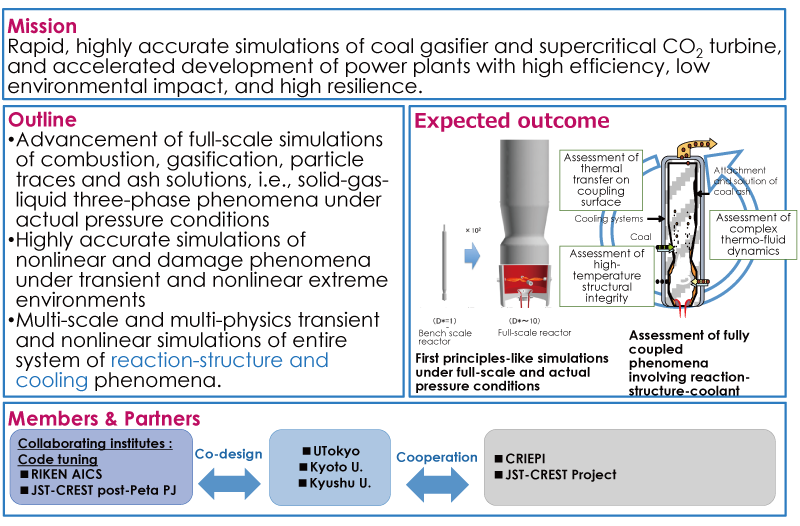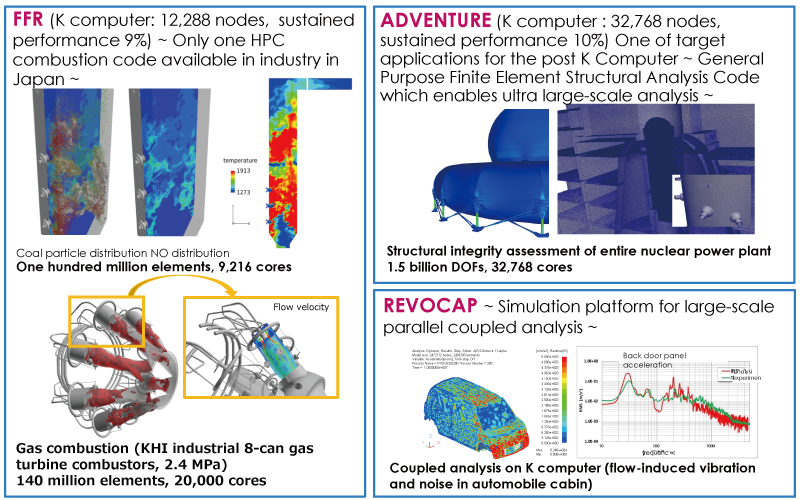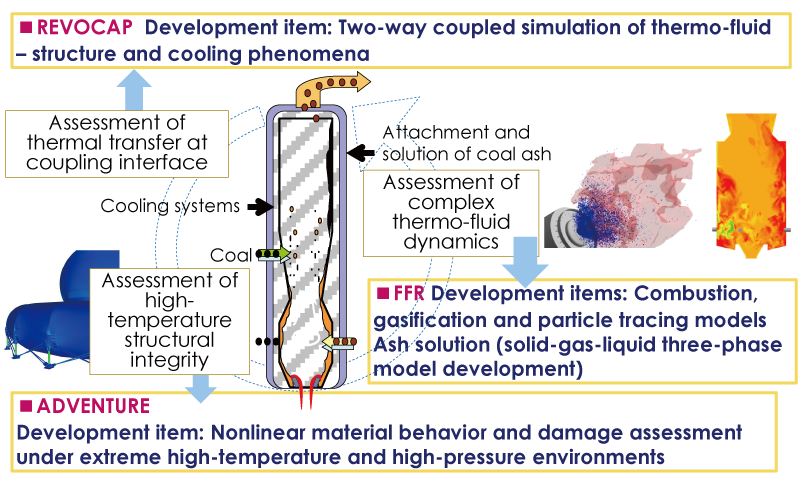Yoshimura Laboratory
Department of Systems Innovation, School of Engineering, The University of Tokyo
Sub-issue A
Coal Gasification PlantsEnergy conversion systems accompanied by high-pressure combustion and gasification
- PI ; YOSHIMURA, Shinobu
Professor, School of Engineering, The University of Tokyo
Technology that separates, collects and stores greenhouse gases such as CO2 emitted from fossil power plants is referred to as carbon capture and storage (CCS). Research and development with regard to advanced coal-fired power plants accompanied by CCS has been underway, with the goal of commercial application in 2020 – 2030.
The key technology in such plants is a reactor in which coal is crushed into fine particulate matter and then partially burned into gas in a high-pressure environment, i.e., a coal gasifier. In this gasification process, sulfur and silicon contained in the coal are completely removed, and CO2 emitted from burned carbon is separated, collected and stored. As the result, coal can be utilized with a significantly reduced environmental impact. Sub-issue A focuses on the reactor used for this coal-gasification process.
To successfully commercialize such new-concept gasifiers and combustors, it is indispensable to fully understand the phenomena that can lead to high efficiency, low environmental impact and high resilience.
To construct actual plants, it is also highly important to perform high-fidelity simulations of full-scale gasifiers and combustors from the stage of design to that of operation. Thus, sub-issue A, focuses on research and development based on such simulations using the post-K supercomputer.
Target
Large-scale multi-physics large-eddy simulation of solid-gas-liquid triple-phase system. Reactor-structure and cooling phenomena, and application to accelerated commercialization of advanced coal-fired power plants using CCS
Challenges
- Rapid, highly accurate simulation of combustion and gasification reactions under actual operating pressures, i.e., several tens of atmospheres.
- Multi-phase analysis of systems containing gas, liquid and dispersed particles.
- Understanding and modeling of ash attachment to reactor wall and solution mechanism.
- Two-way coupled simulation of combustion phenomena and thermal conduction in reactor vessel and nonlinear damage analysis of reactor.
Members
YOSHIMURA, Shinobu (PI) : Vice Prejident, Professor, School of Engineering, The University of Tokyo
KUROSE, Ryoichi: Associate Professor, Department of Mechanical Engineering and Science, Kyoto University
WATANABE, Hiroaki: Associate Professor, Faculty of Engineering, Kyushu University
YAMADA, Tomonori: Associate Professor, School of Engineering, The University of Tokyo
Energy conversion systems accompanied by high-pressure combustion and gasification
- Outline -

- Achievements using K computer and progress in preparatory phase -

- Applications on the post-K computer -

